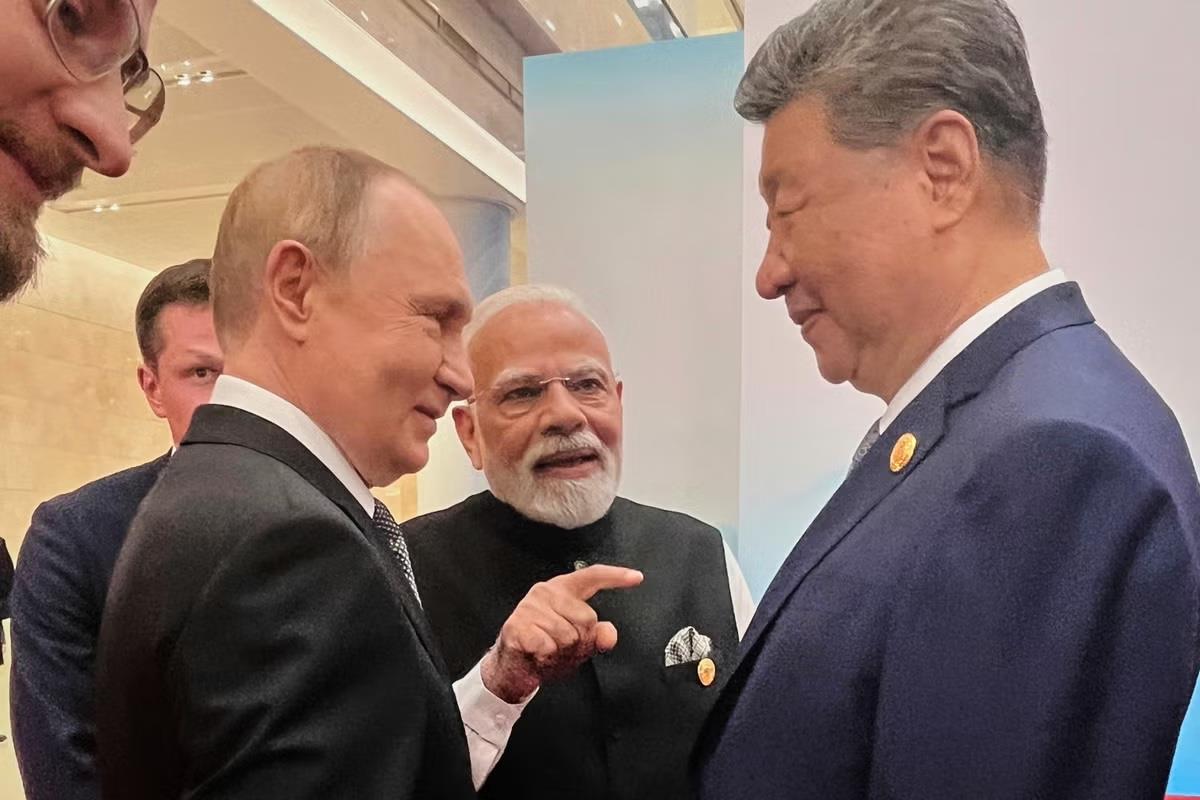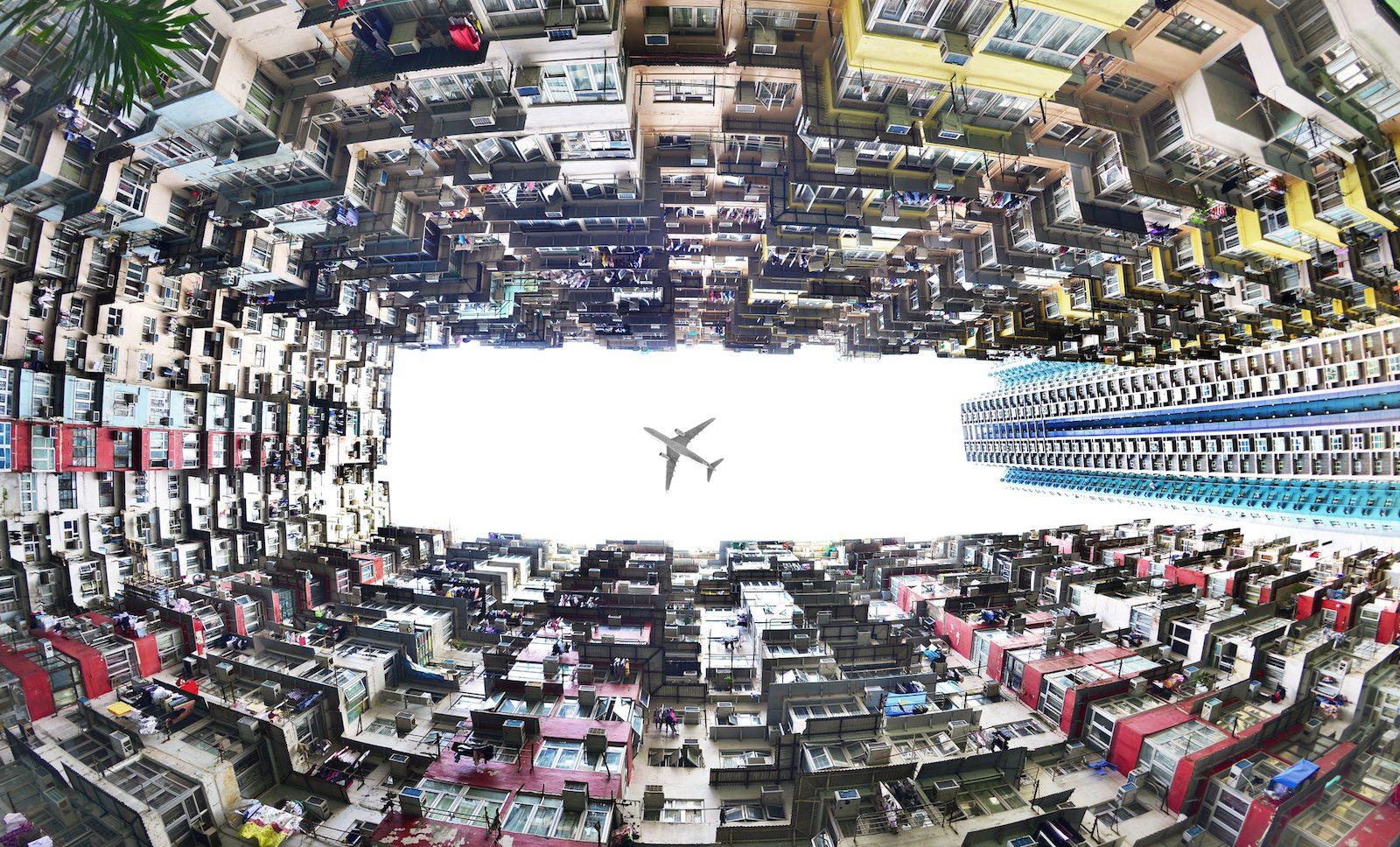
Xi-Modi-Putin Economic Axis Hardens As Trump Tariffs Backfire
US officials wondering what effect President Donald Trump's move to slap 50% tariffs on India might have need look no further than Prime Minister Modi's travel schedule. This week, the Indian leader was in Beijing, standing shoulder to shoulder with China's Xi Jinping and Russia's Vladimir Putin.
Modi's first trip to the Chinese capital in seven years is giving the push for a less US-centric multipolar world greater urgency. The optics of the overt displays of camaraderie sent a message of defiance to a Trump White House trying to pound China and India into economic submission.
Yet neither Xi nor Modi is assuming the position that Trump expected. Instead, Trump's trade war is breathing new life into a BRICS economic bloc that, prior to January, seemed on the ropes.
Back then, the Brazil, Russia, India, China, South Africa grouping had lost momentum in creating a cohesive alternative to the US-led order. So much so that Xi didn't bother to attend this year's big BRICS summit in Rio de Janeiro in July. It raised many eyebrows, considering the“C” is the only reason anyone cares about the BRICS .
Then came Trump's 50% India tariff a month later. The rate shocked officials in New Delhi as much as anywhere. It matched Trump's tariff on Brazil.
Trump had long been down on the developing world's answer to the Group of Seven. But the real red line for the US leader, it's now clear, is the BRICS joining forces to replace the dollar as the reserve currency.
Ostensibly, Trump's 50% levy was in response to Brazil holding former President Jair Bolsonaro accountable for a 2022 attempt. However, in addition to Brazil and India, Trump has imposed significant tariffs comparatively on China (30%) and South Africa (30%). The latter confronts the highest rate in all of sub-Saharan Africa. Nigeria, Ghana, Lesotho and Zimbabwe face just 15%.
Trump has largely gone easy on Putin. But miffed that India is helping Russia get around US oil sanctions, Trump is going after Russia via Modi's economy. And it may already be backfiring in tantalizing ways.
“The classic maxim of foreign policy is unite your friends and divide your adversaries,” former Treasury Secretary Larry Summers told Bloomberg.“This should be an occasion for some real soul-searching on the part of America's national security thinkers.”
Modi's sudden visit to China follows an agreement announced by the two nations last month to resume direct flights, ease Chinese export controls, and reduce border tensions.

Legal Disclaimer:
MENAFN provides the
information “as is” without warranty of any kind. We do not accept
any responsibility or liability for the accuracy, content, images,
videos, licenses, completeness, legality, or reliability of the information
contained in this article. If you have any complaints or copyright
issues related to this article, kindly contact the provider above.
Most popular stories
Market Research

- R0AR Chain Announces $100,000 Community Rewards For Creators, Yappers, And Brand Evangelists
- Cryptolists Recognised As“Crypto Affiliate Of The Year” At SBC's Affiliate Leaders Awards 2025
- Tradesta Becomes The First Perpetuals Exchange To Launch Equities On Avalanche
- 0G Labs Launches Aristotle Mainnet With Largest Day-One Ecosystem For Decentralized AI
- Nebeus Overfunds Equity Crowdfunding Campaign With €3.6M Raised, Reflecting Growing Demand For Regulated Cryptofinance Solutions
- Daytrading Publishes New Study Showing 70% Of Viral Finance Tiktoks Are Misleading























Comments
No comment